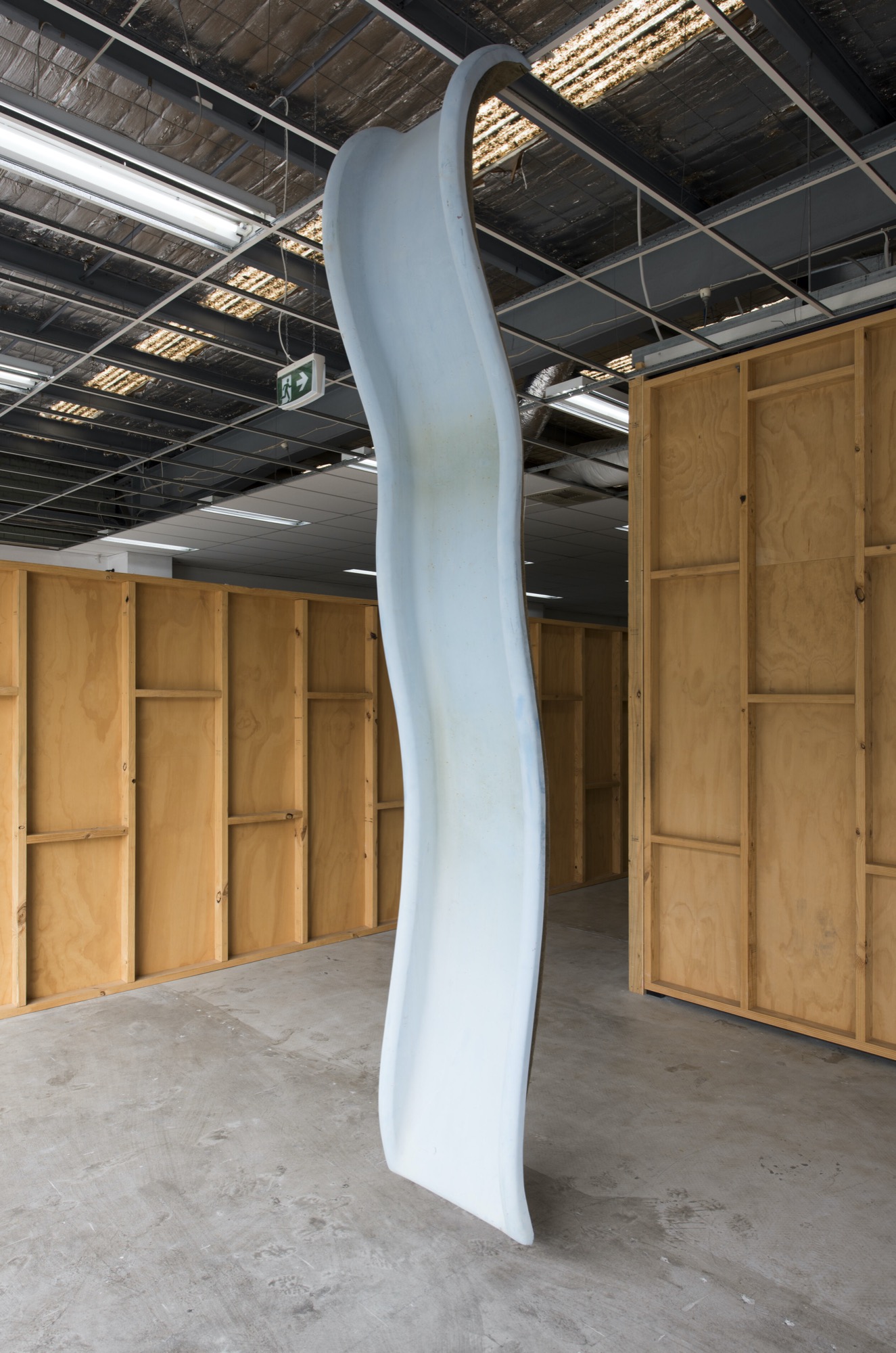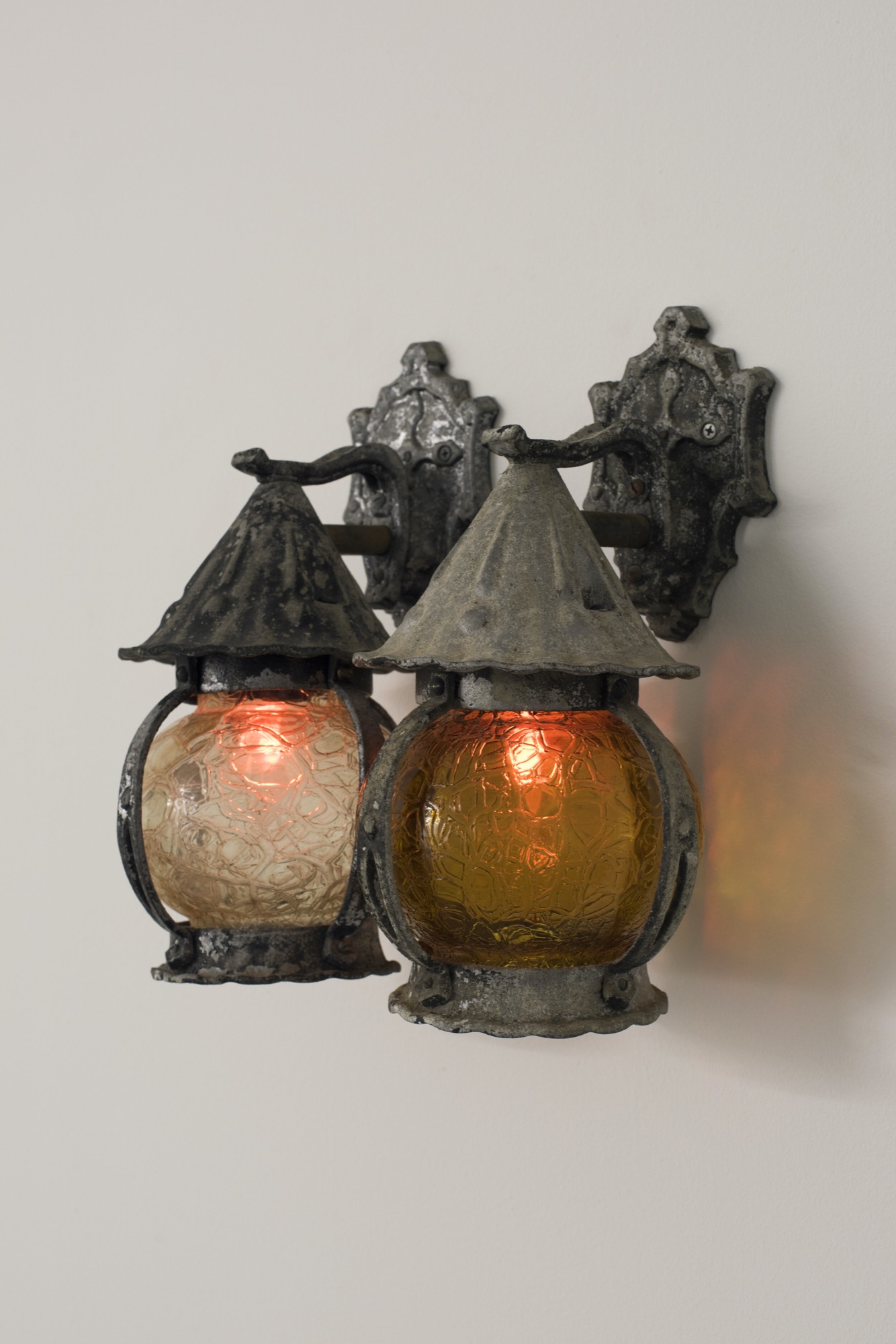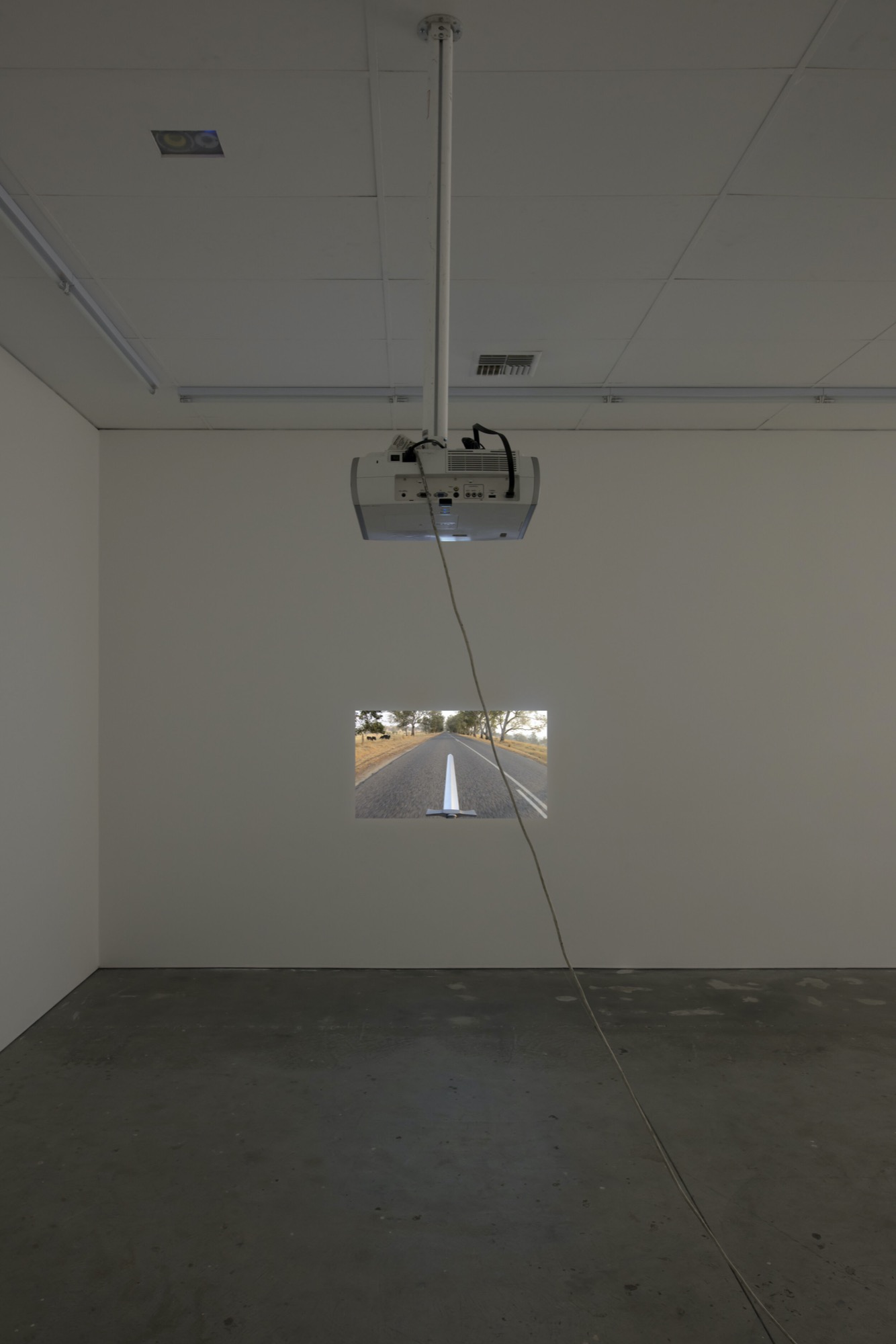Lewis Fidock and Joshua Petherick, Weevils in the Flour
Philip Brophy
How to review a Contemporary Art installation? Just dive in. Sink or swim. No one will help you. The signs are never there. What the default position of CA produces—sometimes engineered as a passive-aggressive strategy, sometimes as a desperate avoidance of categorisation—is for the art to obfuscate. It’s a tack that hinges on well-worn rejections of clearly communicating to “the audience”. Fine if the artist has something complex to say, but for over two centuries visual artists have operated at the barely audible threshold of the murmuring intelligentsia.
Nothing can back up what I'm saying here. But just nod if you've walked into a contemporary art installation to begin playing the game of decoding its Dungeons and Dragons-like search for gold keys. Frankly, I hate that feeling of being coerced into working out what's going on in an art installation. I have no interest in engaging or being engaged with its Isadora Duncan–like trailing of poetic signifiers around my presence. So it's rare that I walk into an exhibition and there's a bunch of stuff that triggers a response that momentarily moves beyond such well-codified stratagems which professionally practicing artistes employ to appease maternalistic curators shaping their careers.

Pigmented fibreglass, 3450 (h) x 580 (w) x 500 (d).
The first thing I see when I enter the major room component of Lewis Fidock and Joshua Petherick's Weevils in the Flour is what I think is a small child. Ugh—some hipster parents have dragged their precious one to an utterly unentertaining encounter at Gertrude Contemporary. Poor kid, I think. It must be worse than playing with dirt. As I look around to see if its parents are there, I realise it's an animatronic figure: Character (2017). A very creepy one, dressed like the mutant outcast Hoggle from Labyrinth (1986).
This is a great opening gambit in the space: messing with your head through motion, corporeality, verisimilitude, the uncanny. If I want to don my art referencing cape of meaning, I'd be digging up similar dolls from East Coast Koons to West Coast McCarthy, via research stopovers with Paul Thek, John De Andrea and Duane Hanson. That would reap meagre rewards. This doll looks like it was picked up from a dumpster in 1983 after they threw out those ugly stilted dolls from the Myer's Christmas window display. I'm reminded of the tragic appeal of those dioramas, trumpeting glory on high through cheap PA speakers, tacky-tizzy set dressing and undergraduate sculpting. This stupid munchkin at Gertrude Contemporary is a mystical portal to failed figuration typical of all mimetic arts called into servicing some creative display for promoting commerce.

Affixed at a single eye-level around the vacant white space are five faux-flickering lamps (Weevils, 2020). They look like limited edition merchandise from The Dark Crystal (1982) knocked off in China and sold cheaply on Alibaba.com®. I don't know if they've been made by Lewis and Joshua, but I don't care either way. Koons' foreshortening of the distance between the art world's hunger for editions and the real world's hunger for Franklin Mint® fodder long ago created a void which highlights that pretty much any endeavour to “make” something is delusional—especially if an artist thinks they've flashed on a new twist.
Semiotically, the lamps of Weevils evoke outer-ring housing commission abodes adorned with flea market trinkets which would define the copper-and-pine aesthetic through 70s “As Seen On TV” furniture franchises. These yob-rustic lamps (think van art of the inside cover to Led Zeppelin IV, 1971) are also associated with “olde worlde” theme restaurants (usually in the outer-outer suburbs before cows appear) which revive European cooking traditions and environments by set-designing their eating spaces as if we're back in the old country.

patinated cast metal, hand-blown glass, B22 ‘flame flickers’, wiring
360 (h) x 160 (w) ea
Are the lamps of Weevils quoting Duchamp's Étant Donnes (1945-1966)? Maybe. Duchamp was deliberately referencing the traditionalist mimetic arts and crafts which he almost single-handedly devalued through his invention of “conceptual art”. Was Duchamp perversely laughing at all the crap conceptual art he inspired throughout the 60s and 70s while he secretly toiled away on finalising the installation of his work not at MoMA, but in the Philadelphia Museum of Art (just a stone's throw from the original Franklin Mint®)?
The DnD flavour is tastily confirmed with the video Destiny (2020), played on a domestic den-sized screen. A pathetic mighty sword (rubber painted silver?) protrudes from a vehicle's hood positioned at the bottom of the screen depicting a POV drive along an endless dead country road. Double ugh. I'm transported back to interminable drives into the country as a teenager, travelling with the family to some shit hole out of town to do nothing in the middle of nowhere. This fixed-camera video drones on with all the mock glory and grandeur of cheap polygon castles in 90s' fantasy games released on CD-ROMs. To the left and right of the screen, shoddily farmed grazing fields and random clusters of gum bush blur like horizontally smeared remnants of original Heidelberg School landscapes suffering from water damage when the CFA has doused some old academic's country home after bored country teenagers set the place alight for the hell of it.

Destiny is funny because it's crap—which is a puerile tactic, but it's symptomatic of how young contemporary artists (and throw in synth and/or guitar bands, fashion designers, and the video makers they both hire) forge acerbic generational welts in their work to exclude their audience more than target them. Most people watching the video at Gertrude Contemporary are likely artists enrolled in art schools where the painting department allows them to make boring videos. Unregulated cynicism ensues from such students and graduates knowing deep down that the context for their learning how to “make art” is or was bankrupt, and their consequent desultory “artworks” therapeutically work through this tedious dilemma of the (triple ugh) “emerging artist”.
But what surprised me about Destiny was the possibility that—in this hyper-gameplay of intellectual perversity that I sense excites Fiddock and Petherick—the landscape it depicts represents a frustrated regional localised perspective rather than any urbane rejection of greater white Victoria as culturally bereft. It's unclear where this hoon mobile is headed, but it sure never gets there. The asphalt pummelled underneath Destiny's looping is like a moebius scroll of psycho-geographic tombstones of generations of white men in blue singlets covered in black tar baking under the Southern sun rolling out the networking envisioned by the National Roads Act commenced in 1974. That programme paved the way (literally and psychologically) for generations ferried back and forth between “isolated” zones and “central” spots. Despite its utopian linkage, it marks long-standing cultural divisions (not to mention racial historiographic rifts).
Destiny is arguably not just video, but “installed video”. Quadruple ugh—yet the install is deliberately more ugh than über: a dusty tradie extension power cord trails down from a removed ceiling panel, along the ground, then up to the suspended video projector, for no purpose other than to fuck with the space. More puerile antics possibly, but I laughed like I laugh at any artist who seriously thinks they're producing Institutional Critique when accepting a gig by some CA organization. For just as Fiddock and Petherick's objets d'artes resemble deceased estate ephemera sold from a car boot sale held at a disused drive-in, they approach CA installation strategies and gestures with the thug Neanderthal bluntness of a Victorian Building Authority tradesman, carving wider and wider concentric rings of home development throughout the State.

Overall, Weevils in the Flour synchs more with the jesters, trolls and serfs of Benalla, than the lords, dukes and princesses of Brunswick. It seems aligned not with Contemporary Art as a heroic endeavour or conceptual quest, but with Contemporary Art as an ongoing drive in the back seat. You can't wait to get there—but you're incapacitated by knowing you'll never get there anyway. Contemporary Art that seeks to negate this negativity is possibly the most deluded activity, and Weevils in the Flour dares you to step away from metropolitan art and ride into the badlands of boredom, banality and bankruptcy.
Philip Brophy writes on art among other things.


